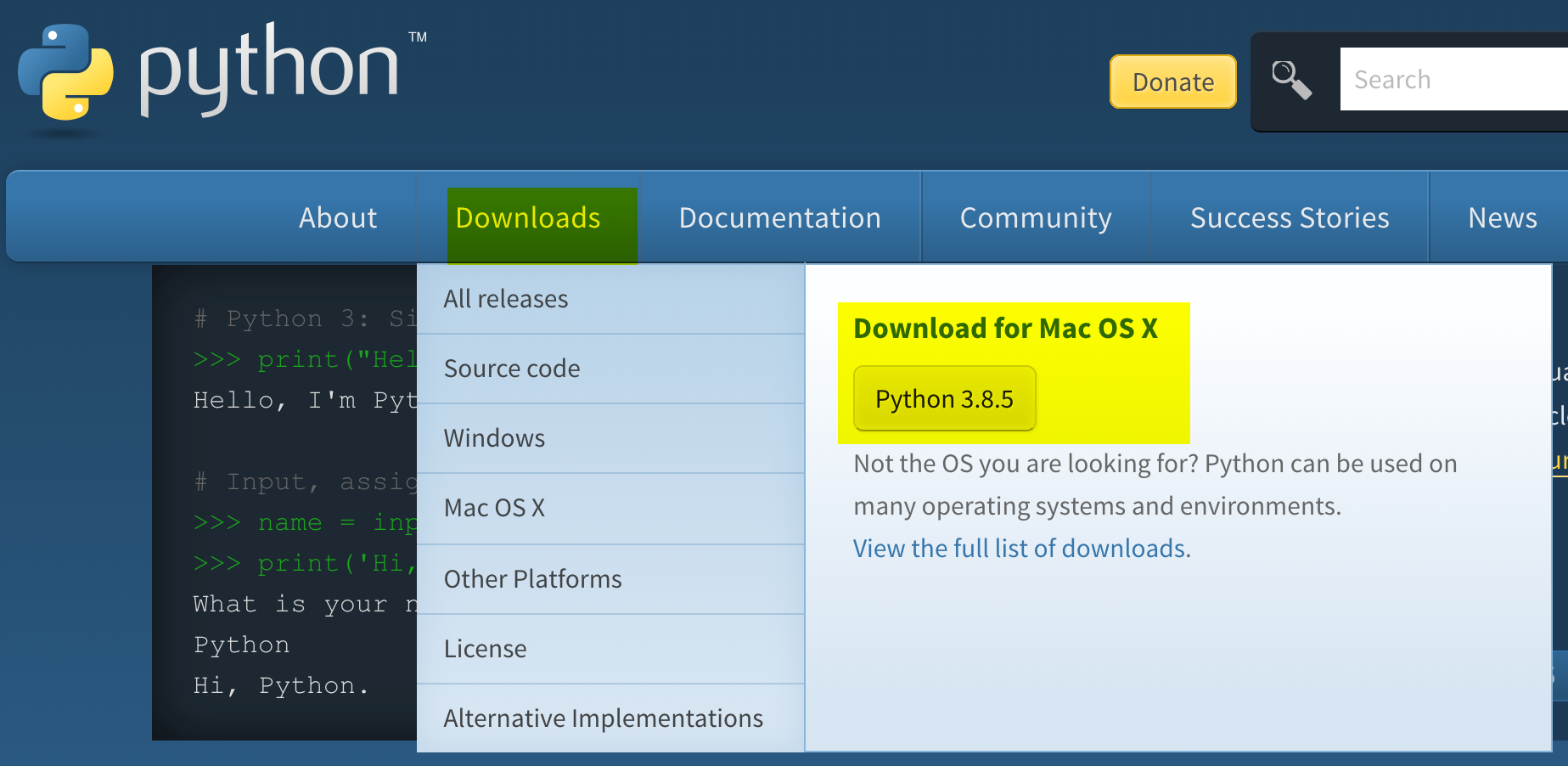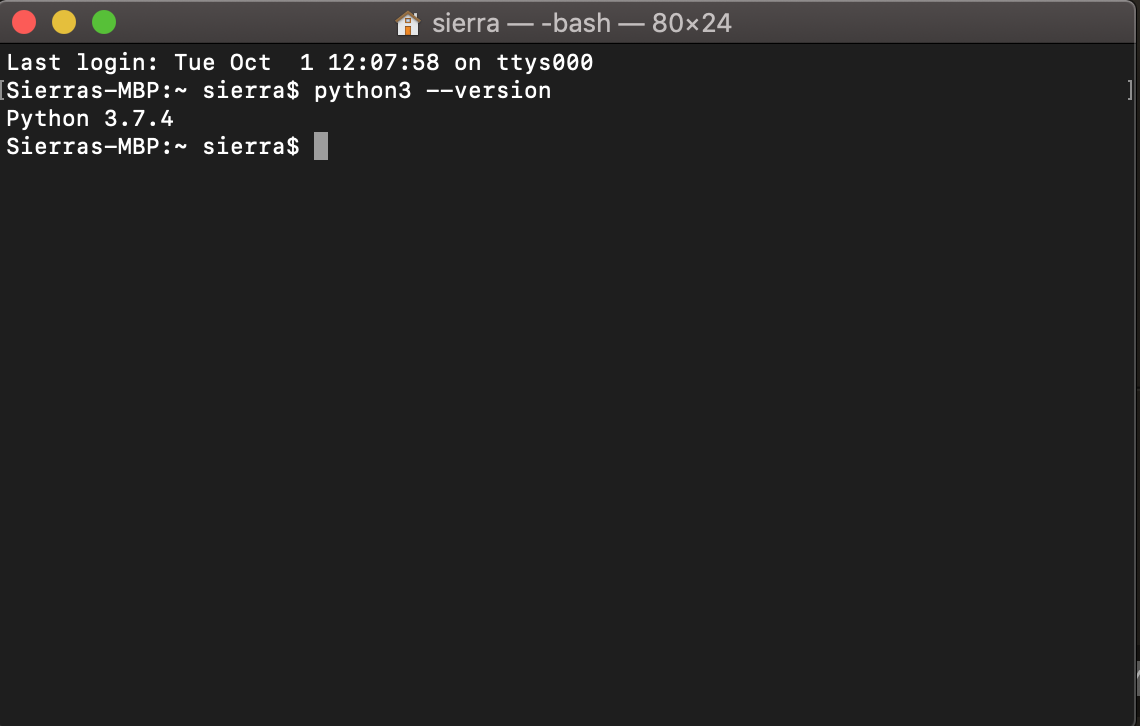
Then press Ctrl+X and Enter to exit nano. Make sure to save (write out) by pressing Ctrl+O then Enter. If you are on Windows, you need to install a distribution, if you have not. If it has content already, scroll to the bottom using your down arrow key.Īdd the following line: alias python=python3 If you are on a Linux or Mac platform, you already have Python installed. You can confirm by running: echo $SHELL Update your profileįirst, change into your Home directory: cd ~ĭepending on which shell you are using, enter one of the following: nano.

If it’s a percentage sign ( %), you’re most likely using zsh. If it’s a dollar sign ( $), you’re most likely using bash. Open Terminal and look at the last character of the prompt. What shell are you using?įirst, determine what shell you are using. Here is how you how to fix this.įirst, check your Python version: Nats-MBP:~ natdunn$ python -V Instead, to run Python 3, you have to use the python3 command. When you install Python 3 on a Mac, it does not update the python command to use Python 3 instead of Python 2. (' &' keeps Terminal usable while IDLE window is open.Mapping python to Python 3 on Your Mac See Python: Tips and Tricks for similar articles. Download and run the appropriate installer for your system and follow the platform-specific instructions below. This is how you launch IDLE for Anaconda Python: There is one caveat: in LING 1330/2330, we will be using the interpretive shell interface via IDLE rather than Jupyter Notebook you probably have been using. That works too! Make sure to update it to the latest 3.X version.

That way, you can make sure you are working in the exactly same setup with the rest of the class, which just might save you some headache stemming from a configuration unique to your machine. If you previously installed an earlier version of Python 3 (say, 3.5.1 or something), then you should either update it or simply un-install it and then install the newest version of Python 3.

Click "Downloads", then download the latest version from there:


 0 kommentar(er)
0 kommentar(er)
